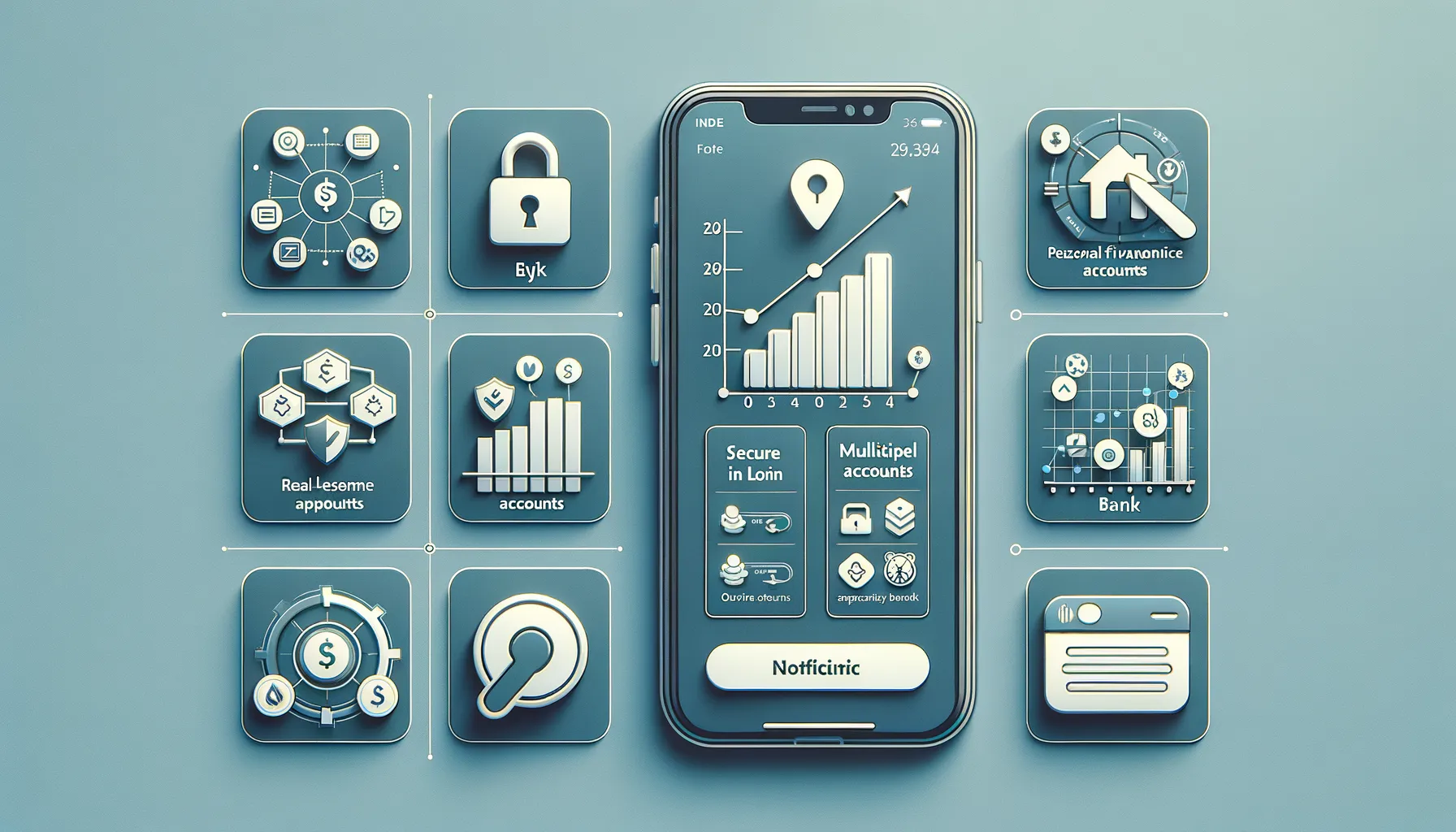Benefits of Using Finance Apps for Hospital Bill Management
Why Finance Apps Are Game-Changers for Hospital Bills
Have you ever felt like keeping track of hospital bills is a bit like juggling knives? Stressful, overwhelming, and frankly, a little dangerous for your peace of mind. Enter finance apps, your digital lifeboat in the stormy sea of medical expenses.
First off, let’s talk organization. Instead of scrambling through piles of receipts or scrolling endlessly through your bank statement, these apps group everything neatly in one place. Payment history? Check. Upcoming due dates? Double-check. It’s like hiring a personal assistant—but way cheaper.
Then there’s automation. Many apps will *remind* you to pay your bill before that dreaded late fee swoops in. Some even sync with your health insurance platform, so you can cross-reference coverage instantly. Hello, no more overpaying!
- Track every cent spent on consultations, prescriptions, and procedures.
- Set custom alerts to avoid missing payments—which could damage your credit score!
- Generate clear reports to understand where your healthcare dollars are going.
And here’s my favorite part—apps like this put the power back in your hands. Whether you’re managing costs after a surprise surgery or just staying ahead of regular check-ups, they make navigating hospital bills feel, well…doable.
Steps to Set Up a Digital Budget for Medical Expenses

Start with Knowing Your Numbers
Budgeting for medical expenses without knowing the exact numbers is like embarking on a road trip without a map. Begin by gathering all your essential information. Review past hospital bills, doctor visits, medication costs, and even those sneaky over-the-counter purchases. This gives you a sense of your average monthly healthcare spending. Don’t forget to factor in annual or semi-annual expenses like health insurance premiums or specialist appointments—they *always* show up when you least expect them.
Once you’ve collected these details, categorize them into buckets:
- Recurring expenses like medications and regular check-ups.
- Unexpected costs such as ER visits or sudden surgeries.
Trust me, having a clear snapshot makes decision-making far less stressful.
Connect It All with Your Finance App
Now comes the fun part—setting up your digital safety net! Open your favorite finance app (if you don’t have one yet, we’ll cover that soon). Most apps will let you create custom categories, so go ahead and dedicate one exclusively to medical expenses—something like “Health First” or “Care Fund” sounds so much better than plain old “Medical.”
Track every penny. Got a co-pay for a specialist visit? Add it. Picking up a prescription? Log it. By making this a habit, you’ll get a crystal-clear picture of where your health dollars are going. Plus, many apps offer tools to set spending alerts or savings goals, giving you that extra nudge to stay on track without feeling overwhelmed.
Features to Look for in Finance Apps

Must-Have Tools for Smarter Budgeting
When choosing a finance app to help you tackle those overwhelming hospital bills, you want features that feel like a personal assistant in your pocket—always reliable and tailored to your unique needs. Imagine an app that’s like a calm navigator during financial storms. Here’s what to look for:
- Customizable Budget Categories: Medical expenses aren’t one-size-fits-all. From prescription costs to specialist visits, the app should let you label and track categories specific to your healthcare journey.
- Bill Due Date Reminders: Missed payments on medical bills can spiral into chaos. Look for apps that nudge you with friendly reminders before due dates—like a helpful friend who never forgets.
- Integration with Bank Accounts: The best apps sync effortlessly with your bank accounts, so you can monitor costs without juggling numbers between platforms.
AI-Powered Insights and Forecasting
Let’s get futuristic! Some apps use AI insights to study your spending patterns, spotting trends you might miss. For example, these tools could warn you if you’re creeping towards overspending on co-pays or even suggest saving extra for upcoming treatments. It’s like having a secret financial coach whispering advice in your ear.
Lastly, look for apps offering bill negotiation options. Yes, some can actually help lower the amount you owe—because who doesn’t love a tool that fights for your wallet?
Tips for Managing Healthcare Costs Efficiently

Break Down Medical Costs Like a Puzzle
Managing healthcare costs can feel like piecing together a 1,000-piece puzzle—but here’s the good news: it doesn’t have to stay overwhelming. Start by breaking things down! Request an itemized bill from your provider. You’d be surprised how often overcharges or mistakes sneak into statements (yes, even for something as simple as aspirin). Once you see the detail, you can tackle costs step by step.
Also, don’t be shy about negotiating. Many hospitals and clinics offer payment plans or discounts—especially if you pay upfront or in cash. Think of it like haggling at a market; it’s a skill worth practicing!
Strategic Move: Know Your Coverage Inside Out
Your insurance policy isn’t just fine print—it’s your shield against unexpected expenses. Study it closely. Does it cover out-of-network visits? Are there hidden copays or deductibles lurking? Knowing what’s covered and what’s not helps you avoid surprise bills.
And here’s a pro-tip: maximize your savings by leveraging tools your insurer might already offer. Some provide free budgeting tools or partner with specific finance apps to simplify payments.
- Always check your Explanation of Benefits (EOB) forms—it’s a treasure map revealing what your insurer paid.
- If something seems off, don’t hesitate to call customer service. Persistence pays!
Every dollar counts, so roll up those sleeves and take charge of your medical finances!
Common Mistakes to Avoid When Budgeting Medical Expenses

Overlooking Hidden Costs That Sneak Up
One of the biggest culprits in derailing a medical budget? Hidden costs. These sneaky expenses love to hide in plain sight—like that follow-up consultation your doctor casually mentioned or the out-of-network lab tests you assumed were covered. Before you know it, they’ve burrowed into your finances like a stealthy little gremlin.
Here’s a tip: always read the fine print on bills and insurance statements, no matter how mind-numbingly long they are. If you’re unsure, call the billing office. Yes, waiting on hold might feel like punishment, but clarifying those details keeps surprises at bay. You’ll thank yourself later.
Getting Too Rigid With Your Budget
Budgeting for medical expenses can feel like balancing on a tightrope. The temptation? To make it so strict that there’s zero wiggle room. It might look great on paper, but in real life, it can leave you stranded when curveballs hit—because let’s face it, health emergencies don’t send you a “save the date” card.
Instead, include an “uh-oh fund” in your digital budget. Even a small buffer can be a lifesaver. It’s like having snacks on a road trip—you may not need them, but when hunger hits, you’re prepared.
- Forget to track co-pays? Add a reminder in your app.
- Skipped annual insurance reviews? Time to update your plan’s limits!
Just remember: flexibility isn’t failure; it’s smart planning for the unpredictable nature of healthcare costs.




